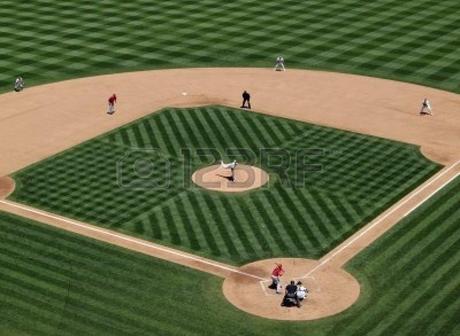In yesterday’s post I described a strategy geared towards outfielders to avoid giving up extra base hits late in the game when your team is ahead by just a run or two. Today’s post is another common strategy also geared towards outfielders. This strategy is to make sure the opposing team has a harder time getting back into a game when they are behind 2 or more runs

If it’s late in the game, you may be better off throwing to second on a hit.
late in the game. A defensive team uses this strategy when the opposing team has a runner on second base or second and third if ahead by several runs.
In this situation, outfielders are instructed to throw the ball directly to second base on a base hit and let the runner on second score without a throw. The point of the strategy is to keep the batter on first base.
We’ve all seen (and maybe even thrown/kicked some equipment as a result) an outfielder launch a throw to home plate, missing the cutoff man, which allows the run to score AND lets the batter move up to second base and into scoring position. In situations where the one run doesn’t matter much, it becomes more important to keep the batter on first base. A batter on first base will typically need two hits to score him. A runner on second can score just on one hit. Limiting batters to just first base makes it harder for them to score multiple times in an inning and makes it less likely they will come back late in the game. It also keeps the double play in order.
To let outfielders know that this strategy is in effect, you’ll often see a coach call out to the outfielders and tap the top of his hat with his hand. This is the typical sign for “throw to second base on a base hit.” I used to give it to the infielders who would then turn and give it to the outfielders. The outfielders play in their normal spot but throw to second instead of trying to get the runner out at home plate.
Tomorrow’s post: Two out close plays at first base

